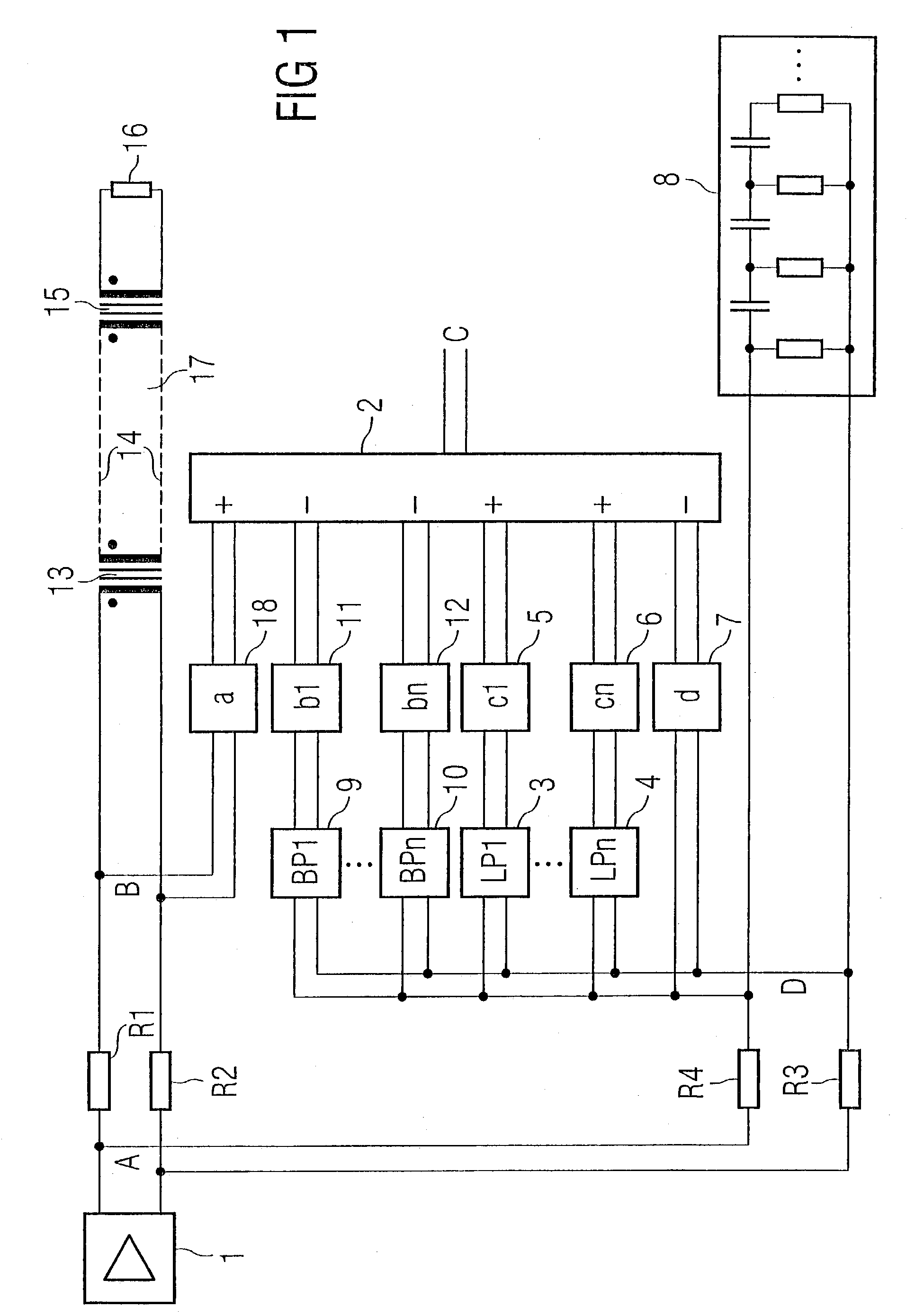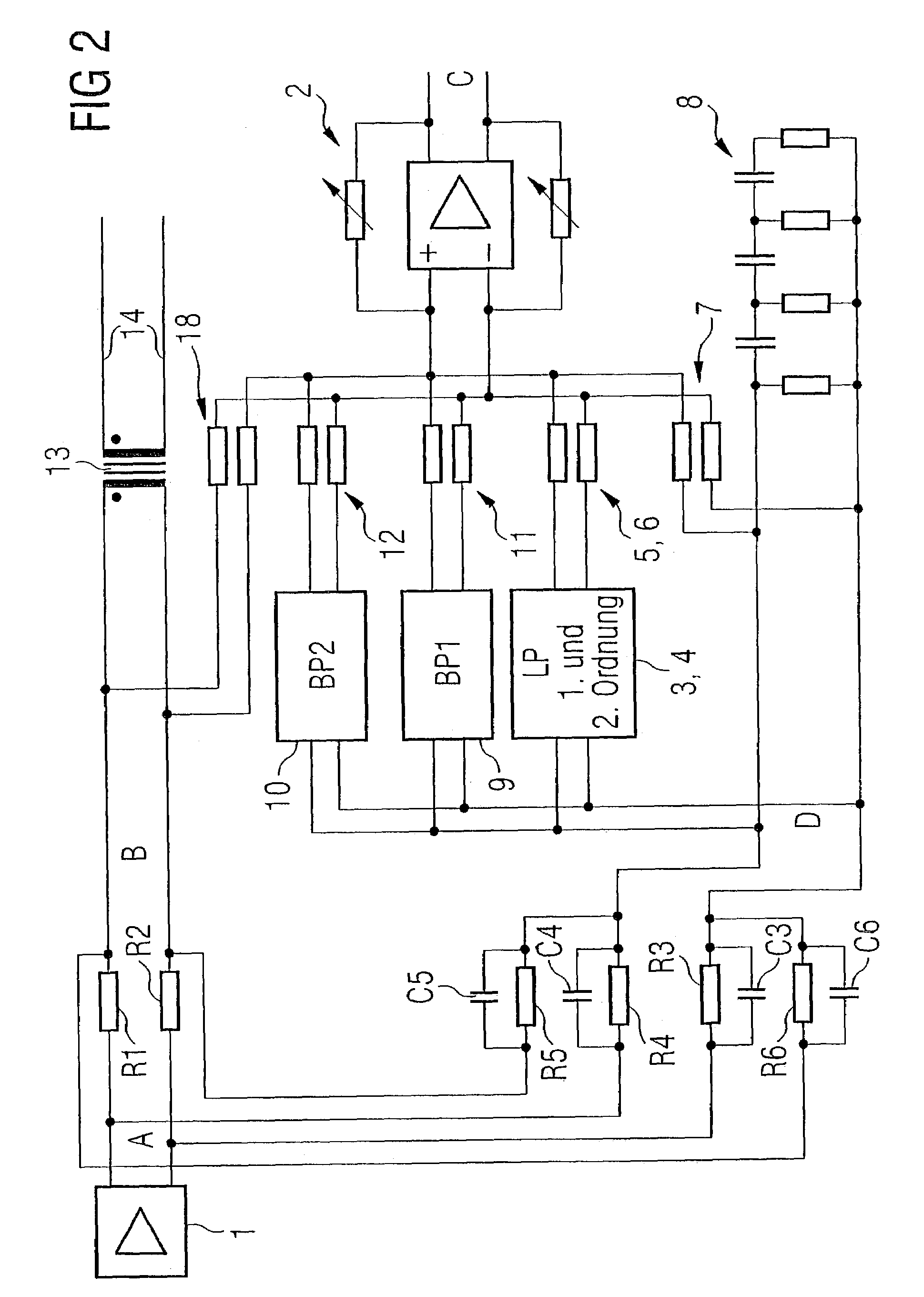Circuit arrangement for the analogue suppression of echoes
a circuit arrangement and analog suppression technology, applied in the field of circuit arrangement, can solve the problems of large technological circuit complexity, inability of digital linear echo compensator inability to compensate non-linear distortion of transmitted signals, so as to achieve low noise, influence linearity and noise, and high linear
- Summary
- Abstract
- Description
- Claims
- Application Information
AI Technical Summary
Benefits of technology
Problems solved by technology
Method used
Image
Examples
Embodiment Construction
[0025]FIG. 1 shows a hybrid circuit of a communication device connected to a transmission line 17, for example, an SDSL transmission line. As normal in itself, the communication device has a line driver 1, which is connected via protective resistors R1 and R2 to a transformer 13. The transformer 13 represents the beginning of the transmission line 17. Stub cables or bridge taps 14 are connected to the transmission line 17. On the receiver end, a transformer 15 is equally provided, which is connected on the input side to the transmission line 17 and is terminated on the output side by a terminal resistor 16.
[0026]As clear from FIG. 1, the output voltage of the line driver 1 corresponding to the pure transmitted signal lies on circuit point A shown in FIG. 1, whereas the sum of the received signal obtained over the transmission line 17 and the transmitted signal to be transmitted over the transmission line 17 lies on line point B equally shown in FIG. 1. In order to obtain the pure re...
PUM
 Login to View More
Login to View More Abstract
Description
Claims
Application Information
 Login to View More
Login to View More - R&D
- Intellectual Property
- Life Sciences
- Materials
- Tech Scout
- Unparalleled Data Quality
- Higher Quality Content
- 60% Fewer Hallucinations
Browse by: Latest US Patents, China's latest patents, Technical Efficacy Thesaurus, Application Domain, Technology Topic, Popular Technical Reports.
© 2025 PatSnap. All rights reserved.Legal|Privacy policy|Modern Slavery Act Transparency Statement|Sitemap|About US| Contact US: help@patsnap.com



